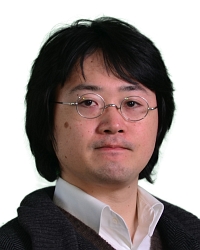TR2021-001
Deep Neural Networks for Inverse Design of Nanophotonic Devices
-
- , "Deep Neural Networks for Inverse Design of Nanophotonic Devices", IEEE Journal of Lightwave Technology, DOI: 10.1109/JLT.2021.3050083, January 2021.BibTeX TR2021-001 PDF
- @article{Kojima2021jan,
- author = {Kojima, Keisuke and TaherSima, Mohammad and Koike-Akino, Toshiaki and Jha, Devesh K. and Tang, Yingheng and Wang, Ye and Parsons, Kieran},
- title = {{Deep Neural Networks for Inverse Design of Nanophotonic Devices}},
- journal = {IEEE Journal of Lightwave Technology},
- year = 2021,
- month = jan,
- doi = {10.1109/JLT.2021.3050083},
- issn = {1558-2213},
- url = {https://www.merl.com/publications/TR2021-001}
- }
- , "Deep Neural Networks for Inverse Design of Nanophotonic Devices", IEEE Journal of Lightwave Technology, DOI: 10.1109/JLT.2021.3050083, January 2021.
-
MERL Contacts:
-
Research Areas:
Artificial Intelligence, Communications, Electronic and Photonic Devices, Machine Learning, Optimization
Abstract:
Deep learning is now playing a major role in designing photonic devices, including nanostructured photonics. In this paper, we investigate three models for designing nanophonic power splitters with multiple splitting ratios. The first model is a forward regression model, wherein the trained deep neural network (DNN) is used within the optimization loop. The second is an inverse regression model, in which the trained DNN constructs a structure with the desired target performance given as input. The third model is a generative network, which can randomly produce a series of optimized designs for a target performance. Focusing on the nanophotonic power splitters, we show how the devices can be designed by these three types of
DNN models.


